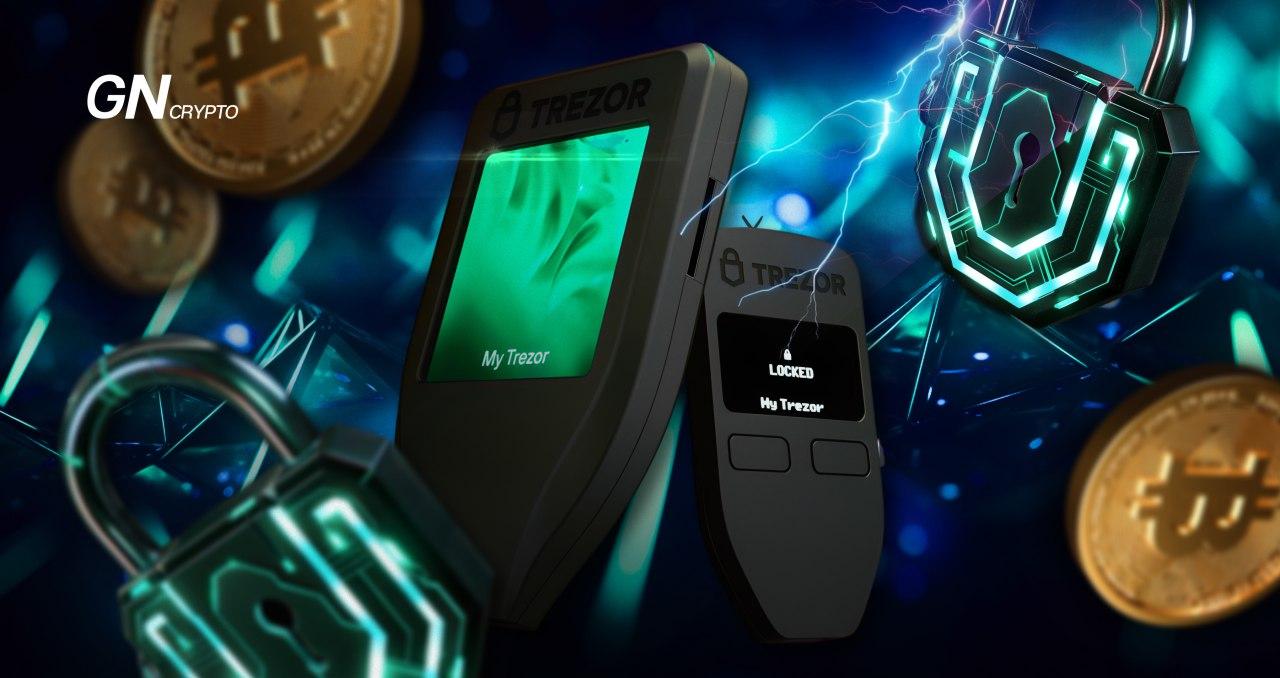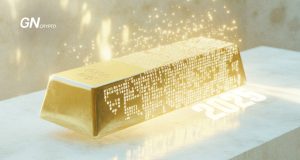Trezor Wallet: How Secure Is Your Crypto?

Trezor is a hardware wallet developed by the Czech company SatoshiLabs. It emerged from an idea conceived by Prague developers in 2011. By 2014, the first model, Trezor One, made its market debut, quickly becoming a staple in the crypto market.
On this page
The Genesis of the Trezor Crypto Wallet
The creator of the Trezor hardware wallet is also responsible for starting the world's first mining pool, Slush Pool, back in 2010.
As miners encountered the problem of storing their earned bitcoins, developers came up with the idea of creating a special digital vault for the coins. And in 2012, when Slush Pool suffered a hack resulting in the loss of more than 3,000 BTC, the need for enhanced security measures became unequivocally clear. It's important to highlight that the mining pool itself was not the direct target of the hack. Instead,the hosting provider Linode used by the company was subjected to the breach. Despite this, the incident highlighted the risks associated with storing digital assets without adequate protection.
Satoshi Labs co-founder Marek Palatinus shared in an interview,
The only way to ensure the security of users' private keys was to create a small, dedicated computer to store them.
The device was designed for the members of the mining pool and other Bitcoin holders, who wanted better and secure storage solutions. The crowdfunding of the product in 2013 raised just over $150,000 which resulted in the release of the first model. Within a year, the investment had recouped, prompting the decision to form a standalone company dedicated to developing the Trezor cold wallets.
As of today, three models have been released:
- Trezor One;
- Trezor Model T, featuring a touchscreen;
- Trezor Safe 3, equipped with Secure Element protection.
Trezor Cold Wallet. Source: trezor.io
The most recent Trezor Safe 3 model stands as an exceptionally secure version of a hardware wallet, equipped with a Secure Element, a chip that boasts an EAL6+ security level.
The EAL (Evaluation Assurance Level), which ranges from 1 to 7, serves as a measure of security level under an international standard. Achieving an EAL6 certification indicates that a system is highly trustworthy, having undergone comprehensive testing phases, including penetration tests. It's deemed suitable for use in high-risk situations where the value of the protected assets justifies the additional expenses on complex functionality.
What does this mean in practical terms?
The Secure Element chip shields the wallet from physical attacks, ensuring that if the device were to fall into the wrong hands, even specialized equipment couldn't extract your PIN code.
Additionally, Slush (Marek Palatinus) and Stick (Pavol Rusnak) have crafted a special offering for Bitcoin enthusiasts: within the Trezor Safe 3 collection exists a special model, featuring the iconic BTC logo's ‘brand’ color. This wallet is dedicated solely to Bitcoin storage and is enhanced with a specialized security firmware.
For every Trezor Safe 3 Bitcoin-Only Edition sold, the company contributes €21 towards fostering cryptocurrency literacy in Africa.
Trezor Safe 3 Bitcoin-Only Edition. Source: cryptonomist
Remarkably, the Bitcoin-only model quickly became a sell-out sensation. The entire batch was sold out within the first 24 hours following the launch of the Safe 3 sales, making it no longer available for general purchase.
According to a 2023 report, Trezor holds approximately 20% of the global hardware wallet market, sharing the leading position with the American company ShapeShift (KeepKey) and the French company Ledger.
Features of Trezor Crypto Wallets
In designing their latest model, Trezor steered clear of succumbing to the allure of trendy designs, opting not to captivate users with unconventional aesthetics.
Forget about rings, hexahedrons, or credit card shapes!
Trezor's hardware wallet design ethos remains steadfastly minimalist. Having long secured its users' trust, the company believes there's no need for elaborate marketing tricks.
Maintaining its decade-long focus, Trezor continues to prioritize the security and reliability of its devices.These devices are, in essence, compact computers that act like vigilant guard dogs, safeguarding their owners' private keys.
Trezor wallets. Source: hardware-wallets.net
Trezor wallets have secured their market niche with notable features such as:
- Enhanced security measures (seed phrase + PIN);
- Improved privacy with a Tor proxy;
- User-friendly interface;
- Simplified onboarding process;
- Convenient backup and swift recovery options;
- Support for a wide array of cryptocurrencies;
- The availability of the Trezor Suite browser app, which offers increased privacy through the use of coinjoin;
- Continued technical support for older models;
- X-ray safety for air travelers;
- Open-source, fostering potential enhancements from the developer and business communities;
- Proactive and responsive customer support;
- Worldwide shipping;
- Balanced cost-quality ratio.
In 2011, we realized that mining Bitcoin was one thing, but storing it safely was another matter entirely. Being computer enthusiasts, we felt we could attempt to make storage secure and straightforward for the average person. This was especially aimed at those who aren’t technically savvy, perhaps only familiar with Windows, and who might underestimate hacking risks. We often met with hackers to discuss these issues. Their experience differed from ours. They might not have been the best software developers, but their insights helped us create the most secure wallet that protects against their types of attacks,
Pavol Rusnak, the co-founder of SatoshiLabs, remarked in one of his interviews.
Trezor also boasts the Trezor Keep Metal, a durable metal backup solution for recovery seeds, addressing the vulnerability of traditional paper backups to environmental damages. Constructed from aerospace-grade stainless steel, this robust solution is built to resist severe environmental conditions, offering protection against fire, water, acid, and physical impacts. Trezor Keep Metal is a testament to Trezor's commitment to creating a more secure and user-friendly ecosystem for digital asset management, catering to the needs of both cryptocurrency novices and veterans alike.
Trezor Keep Metal 12-word recovery seed. Source: trezor.io
What's missing in Trezor wallets?
Currently Trezor's lineup doesn't include a staking function.There's a probability that this functionality might be included in future models, though the developers have yet to reveal their intentions.
You also won’t find Bluetooth connectivity in these devices.
Additionally, there's no built-in software for managing NFTs or interfacing with decentralized apps (Dapps). Accessing these features requires third-party applications, which introduces potential security risks.
Additionally, the wallets do not offer the option to transfer funds directly to debit cards.
If your interests heavily lean towards Web3 and NFTs, you might want to consider wallets from other manufacturers. But for those who place a premium on the security of their holdings, it's comforting to remember that Trezor's cold wallets have remained unhacked. We're hopeful that their impeccable security record continues.
The content on The Coinomist is for informational purposes only and should not be interpreted as financial advice. While we strive to provide accurate and up-to-date information, we do not guarantee the accuracy, completeness, or reliability of any content. Neither we accept liability for any errors or omissions in the information provided or for any financial losses incurred as a result of relying on this information. Actions based on this content are at your own risk. Always do your own research and consult a professional. See our Terms, Privacy Policy, and Disclaimers for more details.





























